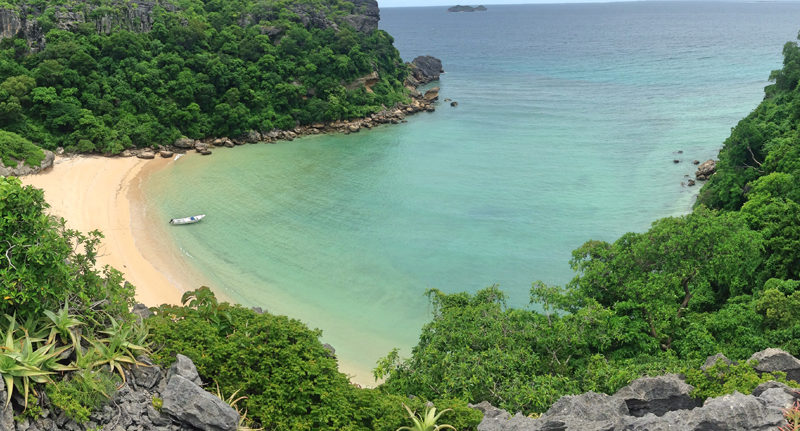Discover Nosy Hara Madagascar — A Hidden Paradise of Nature and Adventure
Tucked away in Madagascar’s far northwest, beyond the reach of crowds and roads, lies an untouched gem: Nosy Hara Madagascar. This remote archipelago of limestone islands, surrounded by turquoise water and coral reefs, is among the most fascinating destinations in the country.
If you crave pristine wilderness, vibrant marine life, and peace far from the modern world, Nosy Hara delivers all three. Moreover, it offers a rare combination of adventure and serenity that appeals to explorers and nature lovers alike.
In this guide, you’ll learn everything you need to plan your journey: where Nosy Hara is, how to get there, what to see, and how to experience it responsibly.
H2: Where Is Nosy Hara Madagascar?
H3: A Hidden Archipelago in Northern Madagascar
Nosy Hara Madagascar lies off the northwest coast, in the Diana Region near Courrier Bay. It consists of a dozen or so small uninhabited islets scattered across clear blue water.
Although small, the main island looks dramatic. Limestone cliffs and sharp tsingy spires rise from the sea, creating a landscape that seems sculpted by time. Additionally, the area forms part of the Nosy Hara Marine National Park, a protected reserve for both land and sea life.
Interestingly, the name Hara comes from the Malagasy word harana, meaning “cliff” or “rock,” perfectly describing this striking environment.
H2: A Fascinating Blend of Land and Sea
Unlike many destinations in Madagascar, Nosy Hara combines rugged landforms with thriving marine habitats. As a result, it offers a remarkable variety of ecosystems within a small area.
H3: The Land — Limestone, Forest, and Tsingy
The islets are made of ancient coral limestone, carved by erosion into ridges, caves, and needle-shaped formations. Between the rocks, small pockets of dry forest thrive, filled with hardy plants and succulents adapted to long dry months.
Because of isolation, many plant species here evolved independently. Consequently, a walk through the forest feels like stepping into a living laboratory of adaptation.
H3: The Sea — Coral Gardens and Hidden Lagoons
Beneath the waves, the story continues. The waters around Nosy Hara Madagascar reveal coral gardens, seagrass meadows, and underwater caves. In addition, the area shelters five species of sea turtles, colorful reef fish, and even dolphins.
Thanks to strict marine protection, the reefs remain healthy. Fishing and anchoring are restricted, and local communities actively help patrol the area to prevent damage.
H2: The Wildlife of Nosy Hara Madagascar
Biodiversity is what truly makes Nosy Hara Madagascar special. Despite its size, the island hosts rare and sometimes unique creatures, both on land and underwater.
H3: The World’s Smallest Chameleon
Nosy Hara is home to Brookesia micra, the smallest chameleon on Earth. Measuring less than a centimeter, this tiny reptile lives among dry leaves on the forest floor. Finding one requires patience, yet the reward is unforgettable.
Indeed, seeing this miniature wonder in its natural habitat is an experience that connects travelers directly with Madagascar’s evolutionary magic.
H3: Reptiles, Amphibians, and Birds
Beyond chameleons, Nosy Hara shelters geckos, skinks, and frogs. For example, the leaf-tailed gecko and fish-scale gecko are masters of disguise, perfectly blending with bark and rock.
Birdlife is equally rich. The critically endangered Madagascar fish eagle hunts along the coast, while frigatebirds and terns soar overhead. Moreover, evenings bring a chorus of frogs and insects, transforming the island into a natural symphony.
H3: Marine Life Beneath the Surface
Underwater, diversity explodes. The coral reefs around Nosy Hara host over 100 coral species and nearly 300 reef fish species. Parrotfish, angelfish, butterflyfish, and clownfish flash through the clear shallows. Occasionally, sea turtles glide by, and during migration season, you might even spot humpback whales offshore.
Because of the park’s protection, the marine ecosystem remains vibrant, offering visitors some of Madagascar’s best snorkeling experiences.
H2: How to Get to Nosy Hara Madagascar
H3: The Journey Begins in Antsiranana (Diego Suarez Nosy Hara)
Your adventure starts in Antsiranana (Diego Suarez), the northernmost major town in Madagascar. From there, a 30–40 km drive leads you to the coastal village of Ampasindava, the main gateway to the islands.
Afterward, you’ll take a boat for about an hour to reach Nosy Hara. Because the route depends on weather and tides, it’s wise to plan with local operators familiar with the sea conditions.
H3: The Best Time to Visit
The dry season (May–October) is ideal. During these months, seas are calm, trails are dry, and underwater visibility is excellent.
However, from November to April, the rainy season brings heavy showers and occasional cyclones. Therefore, travel during that time is less predictable and sometimes unsafe.
If possible, plan your visit in June or September, when conditions are perfect and visitor numbers remain low.
H2: What to Expect on Nosy Hara Madagascar
H3: Simple Living, Unforgettable Setting
Nosy Hara is truly off the grid. There are no hotels, restaurants, or power lines—just nature in its purest form. Visitors stay in simple camps managed by Madagascar National Parks or local guides.
Although facilities are basic, the setting is extraordinary. You’ll wake to birdsong, watch sunsets over the ocean, and fall asleep under a canopy of stars. For many, this simplicity is what makes the experience so meaningful.
H3: Top Activities and Experiences (Nosy Hara)
1. Hiking and Tsingy Circuits
Several marked trails let you explore the island’s highlights. The Brookesia Circuit is an easy walk through forest floors, while the Tsingy Circuit climbs among sharp limestone for sweeping views. Finally, the Cliff Circuit offers panoramic vistas of the sea and surrounding islets.
2. Snorkeling and Diving
Snorkeling here feels like entering another universe. The reefs teem with color, and visibility often exceeds 20 meters. In addition, certified divers can join guided trips from Diego Suarez or Nosy Be to explore deeper reefs and caves.
3. Island-Hopping by Boat
Each islet around Nosy Hara has its own character. Some are fringed with mangroves; others reveal tiny beaches hidden between cliffs. Consequently, island-hopping by boat is one of the best ways to see the archipelago’s diversity.
4. Birdwatching and Wildlife Observation
Early mornings are ideal for birdwatching, while evenings are perfect for nocturnal animals. Moreover, guided night walks reveal geckos, frogs, and insects that glow in flashlight beams.
5. Camping Under the Stars
Few experiences rival camping on Nosy Hara. As darkness falls, the sky fills with constellations, and the only sounds are wind and waves. It’s a rare chance to disconnect and reconnect—with nature and yourself.
H2: Conservation and Sustainable Tourism
H3: A Protected Paradise
Nosy Hara became a Marine National Park in 2007, managed by Madagascar National Parks with help from local communities and conservation NGOs. Together, they protect both land and sea ecosystems across more than 1,000 km².
Thanks to these efforts, coral reefs have recovered, turtle nesting has increased, and local fishermen benefit from sustainable practices.
H3: Challenges and Threats
Despite progress, challenges remain. Illegal fishing, anchor damage, and climate change still threaten the park’s fragile balance. Additionally, poorly managed tourism can harm reefs and disturb wildlife.
Therefore, both visitors and operators play a crucial role in preserving Nosy Hara’s beauty.
H3: How to Visit Responsibly
-
Always hire certified local guides.
-
Avoid stepping on coral or touching marine life.
-
Use reef-safe sunscreen and biodegradable soap.
-
Carry all waste back to the mainland.
-
Respect local customs and sacred sites.
-
Support community-based tourism projects whenever possible.
By following these simple actions, you help protect one of Madagascar’s most precious ecosystems.
H2: Practical Travel Tips for Nosy Hara
H3: What to Pack
Because there are no shops on the island, preparation is key. Bring:
-
Sufficient drinking water and easy-to-carry food
-
Tent, sleeping bag, and light camping gear
-
Snorkeling mask, fins, and reef shoes
-
Wide-brim hat, sunglasses, and high-SPF sunscreen
-
Insect repellent and first aid kit
-
Flashlight or headlamp with spare batteries
-
Lightweight clothing and sturdy walking shoes
-
Dry bags to protect electronics
H3: Health and Safety
Always check the weather forecast before crossing. Wear a life jacket during boat trips, and move carefully over sharp tsingy rocks.
Furthermore, avoid swimming alone and keep hydrated in the tropical heat. When in doubt, follow your guide’s instructions—they know the area best.
H2: Sample 4-Day Nosy Hara Itinerary
Day 1:
Arrive in Antsiranana → drive to Ampasindava → boat to Nosy Hara → set up camp → evening walk along the beach.
Day 2:
Morning Brookesia Circuit → snorkeling in coral reefs → night walk for reptiles and amphibians.
Day 3:
Climb the Tsingy and Cliff Circuits → enjoy island-hopping to nearby islets → picnic lunch on a secluded beach.
Day 4:
Sunrise swim → pack camp → return to the mainland and continue your Madagascar adventure.
This itinerary balances relaxation, exploration, and plenty of time to appreciate the scenery.
H2: Why Visit Nosy Hara Madagascar?
H3: A Journey Off the Beaten Path
Nosy Hara is as remote as it gets. However, that’s exactly what makes it magical. Here, you’ll rediscover silence, space, and genuine connection with nature.
H3: A Haven for Wildlife Enthusiasts
From the world’s smallest chameleon to colorful coral reefs, Nosy Hara Madagascar bursts with life. Moreover, each day offers something new—whether it’s spotting an eagle, swimming beside a turtle, or discovering a plant that exists nowhere else.
H3: A Model for Eco-Conscious Travel
Every visit contributes to local conservation and community well-being. In other words, your journey helps sustain the park’s ecosystems while empowering the people who protect them.
Final Thoughts about Nosy Hara
Nosy Hara Madagascar is more than just a destination—it’s an experience of wonder and renewal. With its limestone cliffs, pristine waters, and rare wildlife, it remains one of the most fascinating places in Madagascar.
Travel mindfully, leave no trace, and let the island’s beauty remind you why such places deserve protection. In doing so, you’ll take home not just memories, but a deeper appreciation for the fragile harmony of our planet.

